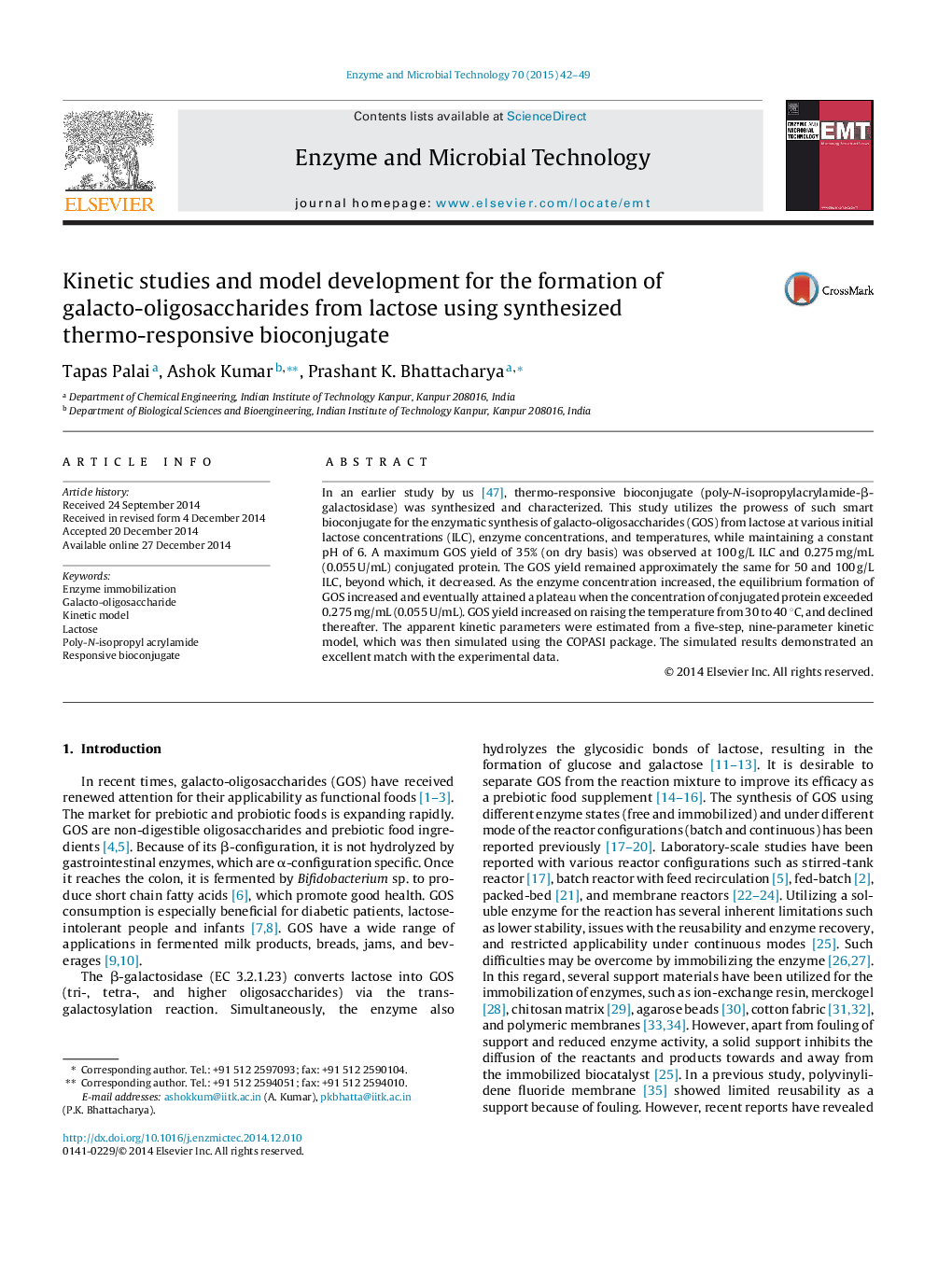| کد مقاله | کد نشریه | سال انتشار | مقاله انگلیسی | نسخه تمام متن |
|---|---|---|---|---|
| 17048 | 42636 | 2015 | 8 صفحه PDF | دانلود رایگان |

• Galacto-oligosaccharides formed using synthesized thermo-responsive bioconjugate.
• Poly-N-isopropylacrylamide-β-galactosidase was used in synthesizing bioconjugate.
• The influences of operating parameters on the formation of GOS were investigated.
• Thermo-responsive bioconjugate fetches a maximum of 35% GOS yield.
• A five-step, nine-parameter kinetic model developed for the prediction of GOS yield.
In an earlier study by us [47], thermo-responsive bioconjugate (poly-N-isopropylacrylamide-β-galactosidase) was synthesized and characterized. This study utilizes the prowess of such smart bioconjugate for the enzymatic synthesis of galacto-oligosaccharides (GOS) from lactose at various initial lactose concentrations (ILC), enzyme concentrations, and temperatures, while maintaining a constant pH of 6. A maximum GOS yield of 35% (on dry basis) was observed at 100 g/L ILC and 0.275 mg/mL (0.055 U/mL) conjugated protein. The GOS yield remained approximately the same for 50 and 100 g/L ILC, beyond which, it decreased. As the enzyme concentration increased, the equilibrium formation of GOS increased and eventually attained a plateau when the concentration of conjugated protein exceeded 0.275 mg/mL (0.055 U/mL). GOS yield increased on raising the temperature from 30 to 40 °C, and declined thereafter. The apparent kinetic parameters were estimated from a five-step, nine-parameter kinetic model, which was then simulated using the COPASI package. The simulated results demonstrated an excellent match with the experimental data.
Figure optionsDownload as PowerPoint slide
Journal: Enzyme and Microbial Technology - Volume 70, March 2015, Pages 42–49